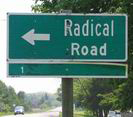
Ulli Diemer — Radical Digressions
Articles Lists
- Selected Articles
- Articles in English
- Articles in French
- Articles in Spanish
- Articles in German
- Articles in Other Languages
- Articles A-Z
- RSS feed
- Subject Index
Selected Topics
- Alternative Media
- Anarchism
- Bullshit
- Capital Punishment
- Censorship
- Chess
- Civil Liberties
- Collective Memory
- Community Organizing
- Consensus Decision-making
- Democratization
- Double Standards
- Drinking Water
- Free Speech
- Guilt
- Health Care
- History
- Identity Politics
- Interviews & Conversations
- Israel/Palestine
- Libertarian Socialism
- Marxism
- Men’s Issues
- Moments
- Monogamy
- Neo-Liberalism
- New Democratic Party (NDP)
- Political Humour/Satire
- Public Safety
- Safe Spaces
- Self-Determination
- Socialism
- Spam
- Revolution
- Trotskyism
Snippets
The real advantage of user fees, from the point of view of those who advocate them, is that they deter the poor from seeking medical care. If the poor can be denied medical care, then those who are not poor can avoid helping to pay for their care.
Ten Health Care Myths
The inefficient socialistic health care system sends him off for treatment within ten minutes – not too shabby, most of us might say – but it takes a lot more than efficiency and high-quality appropriate care to please a National Post columnist.
National Post columnist traumatized by having to wait his turn
Blogs & Notes
- Latest Post
- Notebook 11
- Notebook 10
- Notebook 9
- Notebook 8
- Notebook 7
- Notebook 6
- Notebook 5
- Notebook 4
- Notebook 3
- Notebook 2
- Notebook 1
Compilations & Resources
- Connexions
- Other Voices newsletter
- Seeds of Fire
- Alternative Media List
- Manifestos & Visions
- Marxism page
- Socialism page
- Organizing Resources
- People’s History, Memory, Archives
- Connexions Quotations page
- Sources
- What I’ve been reading
- What I’ve been watching

Words of Wisdom
- Capital is reckless of the health or length of life of the laborer, unless under compulsion from society.
- – Karl Marx
Favourite Links
- Connexions
- CounterPunch
- Marxist Archive
- Bureau of Public Secrets
- Noam Chomsky
- Middle East Resources
- Sources
- More Links...

Medicare Myths and Realities
By Ulli Diemer
Medicare is in many ways a Canadian success story. It’s far from perfect: barriers and inequities certainly exist. Poor people, Native people, temporary foreign workers, undocumented immigrants, are among those who face those barriers. Certain kinds of health care are not covered by the system or are severely rationed: dental care, pharmaceuticals, physiotherapy, mental health.
But most Canadians can now take it for granted they will receive high-quality health care when they need it, without financial barriers. In a country where we compare everything we do with what happens south of the border, we are surprised but pleased to find we have fashioned a health care program which delivers better care, with better results, to a much higher proportion of the population, at a much lower cost, than in the United States.
Most of the media, however, present a very different story. The air is thick with prophecies of doom and prescriptions for drastic surgery. Canada’s health care system is supposedly in crisis – gravely ill at best, perhaps even on its death-bed. The complaints rarely deal with the inequities and barriers that need to be overcome – on the contrary, there are constant calls for a two-tier system that would create vastly greater inequities.
There isn’t much mystery about the agenda that drives the media’s attack on medicare. It’s the same fundamentalist-capitalist dogma that dominates most political discourse. That dogma holds that everything in all areas of human existence should be owned and controlled by private corporations whose purpose is to maximize profits. Everything is a commodity to be bought and sold in the private marketplace. Any service that is provided on the basis of human need rather than profit is an outrage that cannot be allowed to stand.
However, since medicare is an extremely popular social program, the media and right-wing politicians have learned that it is unwise to attack it directly. Instead, they propagate myths designed to undermine public support for, and confidence in, the health care system, with the goal of gradually undermining and dismantling it. What follows is a brief guide to some common health care myths.
Myth #1: Costs are out of control.
Reality: The share of Canada’s overall economy (GDP) going to medicare has stayed in the same 4%-5% range for most of the past 40 years. In fact, in recent years it’s been declining: in 1992, medicare spending was 4.83% of GDP. In 2009, it was down to 4.25%.
What has been going up is other health care spending – things not covered by medicare. The most significant are pharmaceuticals (drug prices increase by more than 7% every year), dental care, and expensive private insurance plans.
Plainly put: public health care spending is contained; private sector costs are increasing much faster than the rate of inflation.
It is true that the percentage of provincial budgets going to health care has increased. This is not primarily due to rising health costs, however, but to the fact that in order to accommodate massive tax cuts for the wealthy and for corporations, governments have slashed spending in other areas, such as infrastructure, transportation, municipalities, education, the arts, and social services. As these areas shrink, health care becomes a bigger proportion of government budgets, even when health care spending doesn’t go up.
Myth #2: We can’t afford our current “free” system. We have to institute user fees.
Reality: Logically, it is absurd to suggest that if we can’t afford something because it is too expensive, the solution is to make it even more expensive. User fees don’t reduce costs, they increase them, not least by requiring the creation of a billing bureaucracy to administer them. But this is a shell game governments love: they give you a $50 tax rebate, then hit you with $500 in user fees, and hope you won’t notice that you’re worse off as a result. Taxes, user fees, or insurance premiums: the money still comes out of your pocket.
What user fees really do is create a two-tier system. Those with money can buy themselves privileged access; those without money get shoved to the back of the line, or don’t get care at all.
We’ve tried this already: Saskatchewan introduced user fees under the Liberals in the 1970s, and as a result physician visits by low-income people decreased by 18%. Despite this, overall costs went up, because of changes in “utilization patterns” and the “mix of services.” In plain English, doctors maintained their incomes by calling back higher-income patients for more frequent visits and more tests. In the end, more money was being spent to provide care to fewer people, while poor people suffered more ill health.
The same effect has been shown with prescription medications. A recent study Canada Community Health Survey found that 9.6% of patients without insurance coverage had not filled prescriptions, or had skipped doses, because they couldn’t afford to pay.
Myth #3: A major cause of rising health care costs is people abusing the system.
Reality: How does one go about ‘abusing’ the system? Patients don’t write their own prescriptions, book their own tests, or perform surgery on themselves: doctors do that. Are there many people who deliberately seek out unnecessary treatments because they enjoy frequent colonoscopies or because their idea of fun is spending a couple of hours sitting in a waiting room? Did a worried parent who took a sick child to the emergency room ‘abuse’ the system if it turns out the child wasn’t seriously ill? Is a hospital being ‘abused’ if it treats a temporary foreign worker who is sick but doesn’t have a health card? Sure, no doubt there are a few addicts out there who fake symptoms to get their hands on painkillers. That’s not a good thing, but they probably cost the public purse less than half a dozen CEOs getting together over an expensed lunch to swap tips about tax evasion.
Myth #4: Government-run health care programs are bureaucratic and inefficient. Introducing private health insurance and competition would make the system more efficient.
Reality: There have been many studies of this, in all OECD (rich) countries, and they have all shown the same thing: the private sector is far more bureaucratic and much less efficient than the public sector when it comes to providing health care.
The United States, which has the most privatized health care system of any OECD country, spends a much higher proportion of its GDP on health care than Canada. Administrative costs in the American health care system are off the chart: several times higher than administrative costs in Canada’s public system.
Myth #5: Americans may pay more for health care, but they get better health care as a result.
Reality: Studies show that on average, Canadians are more likely to receive needed care quickly than Americans. Canadians get more physicians visits per capita than Americans, more immunizations, more hospital admissions, and more surgical procedures. They are more likely to have better outcomes, and more likely to be satisfied with the health care they receive.
Infant mortality, maternal mortality, and life expectancy were worse in Canada than in the U.S. before the introduction of medicare. After medicare, those standings reversed: Canada’s infant mortality rate is now only 75% of that in the U.S., while American women are almost twice as likely to die during childbirth as their Canadian counterparts. The average Canadian now lives two-and-a-half years longer than the average American.
Myth #6: Private clinics will improve access to services by taking pressure off the public system.
Reality: Private clinics suck resources out of the public system. Private clinics give the well-to-do preferential access to health care, while the public picks up most of the tab.
Because they have access to additional sources of revenue in the form of fees from well-off patients, while still being able to fully bill the public system for the procedures they perform, physicians are able to make significantly more money working in a private clinic. Physicians therefore seek to maximize the number of patients they see in their (publicly-subsidized) private clinics, while minimizing the number of patients they see in a public facility. As physicians withdraw their services, waiting lists at public facilities grow longer and the motivation to seek services in the private sector is increased for those who can afford to do so.
This creates a two-tier system. Well-off people, no longer dependent on public facilities for their health care, lose their vested interest in ensuring the excellence of the public system. They demand instead that the taxes they pay to support the public system be reduced, thereby ensuring a further erosion of access and services.
Myth #7: We can save money by relying more on community care and home care and less on hospital care.
Reality: “Community care” is often a code word for cutting costs by providing minimal or no care. When Ontario closed psychiatric institutions in the 1980s in order to institute “community care” for psychiatric patients, it simply dumped people onto the street with no provision for proper housing or support services.
Applied to frail seniors and those with physical and mental disabilities, “community care” is a polite way of saying that families (especially women) will be expected to provide care for free because the health care system won’t.
Real community care is a good thing, but it is not cheap. It may often be better for people to receive care in their own homes or in a community setting, but there is no convincing evidence that it’s any cheaper if the care is provided by qualified professionals. It may even be more expensive.
Myth #8: Instead of our current system of “illness care” we should be moving to a system that emphasizes prevention and “wellness”
Reality: Prevention is a fine thing, but it largely lies outside the healthcare system. Aside from a certain standard procedures such as pre-natal exams, immunizations, eye exams, pap tests, blood pressure monitoring, etc. most of the things that contribute to long-term good health can’t be obtained in a clinic or doctor’s office. However, illness happens to all of us, prevention or not, and then we need care. Pretending that the need for health care can be prevented out of existence can play into the hands of those who want to undermine the public health care system.
The primary determinants of ill-health have been established by any number of epidemiological studies. They include poor nutrition, especially maternal nutrition, unemployment, poverty, inadequate housing, powerlessness, and family stress. Society needs to address these issues, but not by taking money away from health care.
Myth #9: Your health is your responsibility.
Reality: Of course it is. Here are some handy tips: Eat lots of vegetables and fruit. Exercise. Don’t smoke. Don’t eat too many fatty salty foods.
Oh, yes: while you’re at it: make sure you don’t choose parents who are poor or unemployed or poorly housed. Avoid being born with dark skin or in a Native community. Steer clear of planets where carcinogenic chemicals saturate your workplace, your food, your water, and the air you breathe.
The problem is that good advice about healthy living sometimes ends up as a cover for blaming people for being sick. And that can lead to suggesting that people don’t deserve health care if they made bad choices, like smoking, becoming overweight, or being poor.
Myth #10 The money isn’t there. Governments can no longer afford to provide high-quality medical care to all Canadians.
Reality: As a society, we are wealthier than any time in history. In addition to material wealth, we have huge numbers of people – people with skills and energy and ideas – who are unemployed or underemployed because the capitalist economy doesn’t ‘need’ them. If we chose to, we could employ these people, and this wealth, not only in providing better health care, but in providing housing, education, and a thousand other socially valuable ‘goods’. Instead, wealth is increasingly concentrated in the hands of a small number of people. We can change this. It would be a healthy thing to do.
Published July 2012 in Canadian Dimension . This article is based on an earlier version published in 1995 under the title Ten Health Care Myths.
Resources:
Connexions Health Focus page
Canadian Health Coalition
Canadian Doctors for Medicare
Related:
National Post columnist traumatized by having to wait his turn
Abandoning the Public Interest
Health Disparities by Race and Class: Why Both Matter
Inequalities are Unhealthy
Meet the real death panels
The myth of health care unsustainability
Your money or your life
Subject Headings: Bureaucracy - Canada Health Act - Canadian Health Care Myths - Health Care Access - Health Care Costs - Health Care Costs/Comparative Systems - Health Care Funding - Health Care in Canada - Health Care in the United States - Health Care Privatization - Health & Class - Health Determinants - Health Insurance - Health Sources - Insurance/Health Services - Medical Insurance - Medicare - Private Clinics - Privatization - Public Sector - Single Payer System - Socialized Medicine - Universality - User Fees